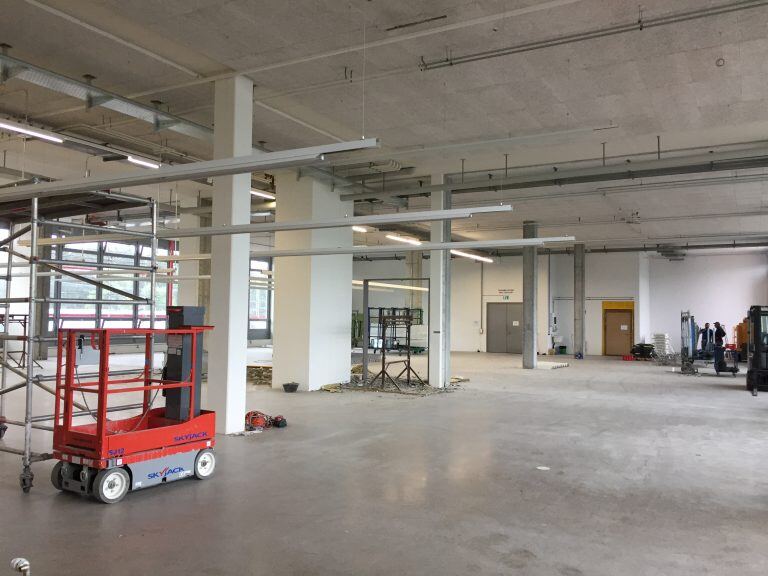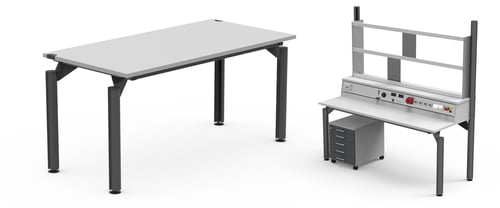In an era marked by constant change, businesses must continuously evolve to stay competitive. Whether it’s implementing new technologies, responding to shifting market dynamics, or reorganizing internal processes, change is a fundamental part of business growth. However, for change to be successful, it must be managed properly. This is where Change Management processes plays a pivotal role. It's not just about executing a new system or policy—it's about helping an organization and its people navigate that transformation in a way that minimizes resistance, maximizes efficiency, and ultimately drives success.
What is Change Management?
Change Management is the structured approach to managing the people-side of change in order to achieve the desired outcomes. It involves preparing, supporting, and helping individuals, teams, and organizations transition from their current state to a desired future state. Whether it’s leading change for small improvements or undertaking large-scale transformational change initiatives, the goal remains the same: to ensure that changes are smoothly and successfully implemented, and that the people affected by the change can adapt with minimal disruption.

At its core, organizational change management seeks to address both the technical and emotional aspects of change. While the technical side might involve the introduction of new tools, systems, or workflows, the emotional side focuses on the human factors—how employees feel about the change, their understanding of it, and their ability to adopt it effectively. A well-crafted change management plan is essential for managing these dynamics and steering the organization toward success.
Successful change projects require strong leadership. A skilled change leader can guide the team through challenges, ensure alignment with organizational goals, and foster a culture that embraces change. From strategy development to implementation, effective Change Management ensures that every change effort contributes to long-term growth and innovation.
Why is Change Management Important?
-
Minimizing Resistance to Change: One of the biggest challenges in any transformation effort is overcoming employee resistance. People are naturally averse to change, especially when it disrupts their routines or introduces uncertainty. Resistance can manifest as apathy, active opposition, or passive noncompliance. Change Management addresses these concerns by providing employees with the tools, knowledge, and support to understand and embrace change.
-
Increased Success Rates of Initiatives: Change initiatives often fail because they are not well-managed. According to studies, organizations that implement strong Change Management and project management practices are more likely to achieve their objectives and see a positive return on investment (ROI). A systematic approach ensures that the change process is planned, communicated, and executed with precision, leading to greater success rates.
-
Boosting Employee Morale and Engagement: Effective Change Management creates an environment of trust and transparency. When employees feel informed, valued, and supported during times of change, they are more likely to stay engaged, motivated, and productive. On the other hand, when employees feel left out or overwhelmed by change, morale can decline, leading to reduced productivity and even turnover.
-
Sustaining Change Over Time: Implementing change is not enough if the new systems or processes are not sustained. Change Management ensures that the changes are integrated into the organization's culture and operations. It helps organizations avoid the all-too-common scenario of reverting back to old ways of working after the initial excitement wears off.
-
Reducing Costs and Disruptions: Change can be costly—both in terms of financial resources and productivity losses. However, a well-executed change process minimizes downtime, ensures efficient resource allocation, and reduces the costs associated with failed projects. Change Management prevents unnecessary rework, miscommunications, and mistakes by providing clear direction and support.
Key Components of Change Management
Successful Change Management involves several critical elements that help ensure smooth and effective transitions.
.png?width=777&height=777&name=Key%20Components%20of%20Change%20Management%20(1).png)
-
Clear Vision and Strategy: Before embarking on any change, it's essential to define the purpose and the desired outcome. What is the reason for the change? How will it benefit the organization and its employees? A clear vision ensures that everyone understands the need for change and can align their efforts towards the same goals. This vision should be communicated consistently at every level of the organization to maintain clarity and direction.
-
Stakeholder Engagement: Change impacts different stakeholders in different ways. Employees, customers, suppliers, and even shareholders may all be affected by the change. It’s critical to involve stakeholders early in the process to understand their concerns, gather feedback, and ensure their buy-in. Engagement can take the form of surveys, focus groups, meetings, and regular updates. When stakeholders feel included and consulted, they are more likely to support the change.
-
Communication: Communication is the linchpin of Change Management. Without clear, consistent, and transparent communication, employees may feel uncertain about the changes, leading to confusion and anxiety. Communication should be timely, relevant, and multi-directional. This means not only informing employees of the changes but also listening to their feedback, concerns, and ideas. Leaders should communicate the reasons behind the change, the benefits, and how it will affect each individual.
-
Training and Development: People must have the necessary skills and knowledge to adapt to new ways of working. Training programs should be put in place to educate employees about new systems, tools, or processes. In addition to formal training, organizations should offer continuous support, such as workshops, webinars, and on-the-job training. Ensuring employees have the resources they need to succeed builds confidence and helps them embrace the change more easily.
-
Support Systems: The transition to new systems or workflows can be challenging, and employees will need support throughout the process. This support can take the form of mentoring, peer support groups, help desks, or dedicated change agents. A strong support system ensures that employees know where to go for help, which can reduce frustration and speed up the adoption of the change.
-
Monitoring and Feedback: After the change has been implemented, it's important to monitor progress and gather feedback. Change Management doesn’t stop after the initial roll-out; it’s an ongoing process. Monitoring involves tracking key performance indicators (KPIs) to measure the effectiveness of the change. Feedback loops help organizations understand any challenges employees are facing, and allow for adjustments to be made if necessary. This ensures that the change is embedded successfully into the organization and sustained over the long term.
Change Management Methodologies
Several methodologies have been developed over the years to guide organizations through the process of change. Some of the most well-known include:
.png?width=777&height=777&name=Change%20Management%20Methodologies%20(2).png)
-
ADKAR Model: The ADKAR model focuses on the individual’s journey through change. It stands for Awareness, Desire, Knowledge, Ability, and Reinforcement. This model emphasizes the importance of addressing each stage of change at the individual level in order to ensure organizational success.
-
Kotter’s 8-Step Change Model: Developed by John Kotter, this model provides a step-by-step approach to change. It includes creating urgency, forming a guiding coalition, developing a vision and strategy, communicating the vision, empowering employees to act, generating short-term wins, consolidating gains, and anchoring the changes in the corporate culture.
-
Lewin’s Change Management Model: This three-step model involves unfreezing the current state, making the change, and then refreezing the organization in the new state. It’s a simple yet effective approach that emphasizes the importance of preparing employees for change, implementing the change, and then solidifying the new way of working.
-
McKinsey 7-S Framework: This model focuses on seven interdependent factors—strategy, structure, systems, shared values, skills, style, and staff—that need to be aligned for change to be successful. It emphasizes the need to consider all elements of the organization, rather than just focusing on one aspect.
Overcoming Challenges in Change Management
Despite its many benefits, implementing effective Change Management can be challenging. Here are a few common obstacles and ways to overcome them:
-
Employee Resistance: Resistance is inevitable. To combat it, organizations should foster open communication, address concerns early, and involve employees in the change process.
-
Lack of Leadership Support: Change requires strong leadership at every level. Leaders should champion the change, lead by example, and maintain visible support throughout the process.
-
Insufficient Resources: Change initiatives often require time, budget, and personnel. It’s essential to allocate the necessary resources to ensure the success of the change management strategy.
-
Poor Communication: Without clear communication, employees may feel confused or alienated. Regular, transparent updates and opportunities for feedback are essential.

How BeeWaTec Supports Change Management in Automation
Incorporating automation into business processes requires a strategic approach to manage change effectively. BeeWaTec not only provides innovative solutions like mobile robots, Karakuri systems, and modular production systems but also helps organizations navigate the transition successfully.
Key Ways BeeWaTec Facilitates Change Management
- Seamless Integration: Tailored automation solutions designed to fit existing workflows, minimizing disruption.
- Employee Engagement: Transparent communication and training to reduce resistance and promote acceptance. Get an overview of Lean Workshops >
- Comprehensive Training: Practical, hands-on training and ongoing support to empower employees to adapt to new technologies.
- Flexibility and Scalability: Modular and versatile systems that evolve with changing operational needs.
- Continuous Improvement: Post-implementation monitoring, feedback, and optimization to ensure long-term success.
BeeWaTec ensures that businesses can embrace automation confidently, fostering a culture of innovation while aligning with the principles of effective Change Management. Ready to start your automation journey? Let BeeWaTec guide the way!

DOWNLOAD NOW!
Change Management Step-by-Step Checklist
Download this Checklist to help you measure and optimize processes in your company effectively.
Download for freeChange Management Step-by-Step Checklist
After you have filled out and sent the form, you will receive the checklist immediately by e-mail.
Conclusion
Change Management is not just a tool for navigating transitions; it is a strategic necessity for businesses to thrive in a rapidly evolving landscape. By managing the change process effectively, organizations can address both technical and emotional aspects of transformation, ensuring they sustain the change over time. Whether tackling a major change or improving a change program, having a structured approach helps businesses adapt while minimizing resistance.
When aligned with partners like BeeWaTec, businesses can make the journey even smoother by implementing tailored solutions that support employees and workflows during significant transitions. BeeWaTec’s expertise ensures that organizations can not only make change but also change successfully, regardless of the type of change they face.
As industries continue to evolve, embracing change effectively will determine which organizations lead and which fall behind. With BeeWaTec’s automation solutions, businesses can confidently manage change within their operations, unlock new opportunities, and create a culture of innovation. Change isn’t just inevitable—it’s an opportunity to excel.
Find lean solutions that support fast and sustainable change
With our modular system you can implement any solution you need. Discover your possibilities, existing solutions or build your own material flow system with BEEVisio in 3D.




_Web_01_01.jpg?width=1240&name=Beewatec-3-(37)_Web_01_01.jpg)


